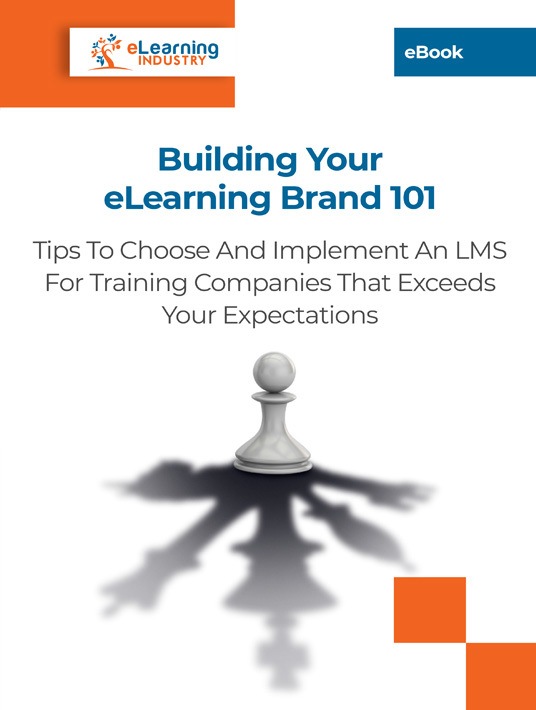Improve ROI With LMS Reports
Training companies rely on LMS reports that go beyond traditional training parameters. Your weekly checklist depends on your business model. Those that offer content bundles or develop custom eLearning solutions must ensure that clients have relevant metrics. If you offer individual learner enrollments, LMS reports must pull double-duty to track learner progress and online sales. Which LMS reports should you look for in your new LMS for training companies to improve returns? And which should you include in your online training package so that clients have the analytical insights they need?

1. Learner Engagement
From a training company standpoint, learner engagement LMS reports help you identify areas of concern, such as under-performing online training courses or activities that may affect your online training course sales. Low engagement scores usually indicate a problem with the design or real-world value. This negatively impacts the learners' online training experience and makes them rethink future enrollments. Learner engagement metrics are also crucial for your clients. They use these numbers to gauge online training effectiveness and ensure that employees actively participate in the program, as well as gauge the popularity of certain activities or support tools to enhance personalization.
2. Completion Rates And Times
How many online learners complete the online training course and how long does it take? Completion rates give your training company a better idea of how online learners are faring or whether they need additional support to achieve the online training objectives. But you can also use these stats to set the ideal difficulty level. Fast completion time means the online training content is too easy while slow time tells you that online learners are struggling. The key is to make them feel challenged without causing undue stress. Clients can also view these metrics in their LMS tenancy portals to track employee progress.
3. Online Training Assessment Results
Online training assessment scores aren’t everything. However, they do help you improve your online training strategy and identify gaps. For example, a high percentage of users fail the certification exam. This indicates a widespread issue with the online training content or the eLearning course design. Even if they can retake the online training assessment, learners may feel "cheated" because they didn’t understand the takeaways. To curb dropouts and increase repeat business, you can offer follow-up support eLearning tools to bridge the knowledge gaps. You can also take a closer look at the curriculum to determine what’s lacking.
4. Online Sales And Conversions
Online sales stats and conversion rates tie into the eCommerce features of an LMS for training companies. You’re able to see how many sales you had during a certain time period and where these profits came from. Conversions reveal how many site visitors converted into paid customers. For example, only 10% of your landing page traffic enrolled in the online training course. Take a closer look at the Calls-To-Action, design elements, and promotional content to identify the sales roadblock. Maybe the language is too strong, and visitors feel like they’re being pushed into a sale. Or the aesthetics are too cluttered and don’t appeal to your target audience.
5. User Registration And Enrollments
These LMS reports focus on how many users enrolled in your online training course during a given period and how they signed up. For example, they registered for your customer service refresher course via the LMS home page. As such, you know they are repeat learners and that your tie-in promotion is working. These metrics also come in handy for events, such as live webinars or workshops. Track how many people RSVPed and who has already paid so that you can follow up if necessary.
6. Satisfaction Scores
Dissatisfied online learners or clients—or the clients' learners—have the power to wreak havoc on your profit margin. Satisfaction score LMS reports sum up how users feel about the online training course, online instructors, and your company. Conduct surveys or polls, then use the LMS to compile and evaluate the results. Another application is to gather eLearning feedback from clients about your products and services to gauge their level of satisfaction. For example, they might not be happy about the new pricing structure or bundling options. Thus, you may need to go back to the drawing board and create more flexible packages based on their requirements and expectations.
7. Click-Through Metrics
Which marketing resources bring in the most sales? It’s not about how many sites visitors or social media followers you have. What really matters is the click-through rate. These metrics let you know which promotional efforts work and which are a waste of time and money. For example, an industry expert embedded your sales page link in their latest online guide or article. Maybe you’re featured in their new top 10 online training courses list. This led to a surge in click-through stats. Thus, you might consider adding them to the affiliate list or pairing up for future marketing campaigns. Click-through LMS reports are also helpful for internal traffic. You can determine how many people reacted to the Call-To-Action on your LMS home page or signed up for the next live event through in-course links.
There are a few other reporting features to consider when looking for your next training company LMS. These advanced functions maximize metrics and help you track trends to improve ROI, such as customizable reporting to align analytics with your KPIs, visualizations to make sense of the stats, and scheduling tools that automate the process to ensure you never miss crucial sales data. These are also perks you can add to your client bundles to sweeten the deal and increase repeat business. A cost-effective way to try the reporting functions before you buy is a free trial. But you should read online reviews first to see which platforms are worth a test drive. Users might mention the lack of customization options or sales tracking tools in the pros/cons.
Finding the ideal LMS for your organization is a must when you need to employ an effective online training strategy with maximum ROI. The eBook Building Your eLearning Brand 101: Tips To Choose And Implement An LMS For Training Companies That Exceeds Your Expectations will help you discover everything you need to know when opting for an LMS for training companies in order to achieve your business objectives.

